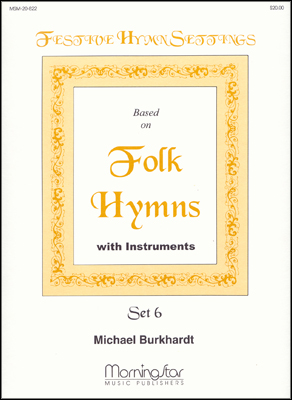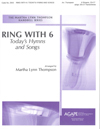- |
User Links
Make me a channel of your peace

Make me a channel of your peace
Adapter: Sebastian Temple; Author (attributed to): St. Francis of AssisiTune: [Make me a channel of your peace]
Published in 40 hymnals
Audio files: Recording
Representative Text
1 Make me a channel of your peace:
Where there is hatred, let me bring your love;
where there is injury, your healing power,
and where there’s doubt, true faith in you.
2 Make me a channel of your peace:
where there’s despair in life let me bring hope;
Where there is darkness, only light,
and where there’s sadness, ever joy.
3 O, Spirit, grant that I may never seek
so much to be consoled as to console,
to be understood as to understand,
to be loved as to love with all my soul.
4 Make me a channel of your peace:
it is in pardoning that we are pardoned,
in giving to all that we receive,
and in dying that we’re born to eternal life.
Source: The Book of Praise #740
Adapter: Sebastian Temple
Sebastian Temple (1928-1997) grew up in South Africa and later moved to London, where he worked for the BBC on news broadcasts relating to South Africa. Sebastian converted to Catholicism and spent much of his time composing music for worship. He is best remembered for "The Prayer of St. Francis," which was played at the funeral of Princess Diana. --http://www.ocp.org/artists/587 Go to person page >Author (attributed to): St. Francis of Assisi
 St. Francis of Assisi (Italian: San Francesco d'Assisi, born Giovanni di Pietro di Bernardone, but nicknamed Francesco ("the Frenchman") by his father, 1181/1182 – October 3, 1226) was an Italian Catholic friar and preacher. He founded the men's Order of Friars Minor, the women’s Order of St. Clare, and the Third Order of Saint Francis for men and women not able to live the lives of itinerant preachers followed by the early members of the Order of Friars Minor or the monastic lives of the Poor Clares. Though he was never ordained to the Catholic priesthood, Francis is one of the most venerated religious figures in history.
Francis' father was Pietro di Bernardone, a prosperous silk merchant. Francis lived the high-spirited life typic… Go to person page >
St. Francis of Assisi (Italian: San Francesco d'Assisi, born Giovanni di Pietro di Bernardone, but nicknamed Francesco ("the Frenchman") by his father, 1181/1182 – October 3, 1226) was an Italian Catholic friar and preacher. He founded the men's Order of Friars Minor, the women’s Order of St. Clare, and the Third Order of Saint Francis for men and women not able to live the lives of itinerant preachers followed by the early members of the Order of Friars Minor or the monastic lives of the Poor Clares. Though he was never ordained to the Catholic priesthood, Francis is one of the most venerated religious figures in history.
Francis' father was Pietro di Bernardone, a prosperous silk merchant. Francis lived the high-spirited life typic… Go to person page >Text Information
Related Texts
| First Line: | Make me a channel of your peace |
| Author (attributed to): | St. Francis of Assisi |
| Adapter: | Sebastian Temple |
| Meter: | Irregular |
| Language: | English |
| Refrain First Line: | O Master, grant that I may never seek |
| Copyright: | © 1967, OCP Publications. |
- (hymns)
- (hymns)
- (hymns)
- (hymns)
- (hymns)
- (hymns)
- (hymns)
- (hymns)
- (hymns)
- (hymns)
- (hymns)
- (hymns)
- (hymns)
- (hymns)
- (hymns)
- (hymns)
- (hymns)
- (hymns)
- (hymns)
- (hymns)
- (hymns)
- (hymns)
- (hymns)
- (hymns)
- (hymns)
- (hymns)
- (hymns)
- (hymns)
- (hymns)
- (hymns)
- (hymns)
- (hymns)
- (hymns)
- (hymns)
- (hymns)
- (hymns)
- (hymns)
- (hymns)
- (hymns)
- (hymns)
- (hymns)
- (hymns)
- (hymns)
English
- Ancient and Modern: hymns and songs for refreshing worship #725
- Anglican Hymns Old and New (Rev. and Enl.) #499
- Breaking Bread (Vol. 39) #525
- Church Family Worship #470
- Church Hymnary (4th ed.) #528
- Common Praise: A new edition of Hymns Ancient and Modern #519
- Community of Christ Sings #605
- Complete Anglican Hymns Old and New #437
- Complete Mission Praise #456
- CPWI Hymnal #453 10 shown out of 37
Spanish
Notes
The Prayer of Saint Francis is a Catholic Christian prayer. It is widely but erroneously attributed to the 13th-century saint Francis of Assisi. The prayer in its present form cannot be traced back further than 1912, when it was printed in Paris in French, in a small spiritual magazine called La Clochette (The Little Bell), published by La Ligue de la Sainte-Messe (The Holy Mass League). The author's name was not given, although it may have been the founder of La Ligue, Fr. Esther Bouquerel.
A professor at the University of Orleans in France, Dr. Christian Renoux, published a study of the prayer and its history in French in 2001 - (Renoux, Christian (2001). La prière pour la paix attribuée à saint François: une énigme à résoudre. Paris: Editions franciscaines.)
The prayer has been known in the United States since 1927 when its first known translation in English appeared in January of that year in the Quaker magazine Friends' Intelligencer (Philadelphia), where it was attributed to St. Francis of Assisi. Cardinal Francis Spellman and Senator Albert W. Hawkes distributed millions of copies of the prayer during and just after World War II.
Wikipedia, 11-14-2013
=======================================================================================================
Scripture References:
all st. = Phil. 2:12-13
ref. = Acts. 20:35
This text is based on a well-known prayer attributed to Francis of Assisi, founder of the Franciscan Order. Originally in Latin, the prayer appeared in various nineteenth century documents (the English translation begins "Lord, make me an instrument of thy peace").
Like 544, "Make Me a Channel" is a fervent, personal prayer but one that is overtly social in its application. In it the believer asks to be a vehicle of divine peace and biblical shalom, one through whom God works "to will and to act according to his good purpose" (Phil. 2:12b-13). The fruit of the Spirit, including love, faith, hope, and joy, will be the channel of reconciliation and peace to a world troubled by hatred, doubt, despair, and sadness. The refrain's theme is characteristic of Francis's Christian ministry and reflects the meaning of Jesus' words quoted by Luke in Acts 20:35, "It is more blessed to give than to receive."
The versification and melody of this setting are the work of Johann Sebastian Temple (b. Pretoria, Transvaal, South Africa, 1928), a member of the Franciscan Order. By the time he was fifteen, Temple had published a novel and two books of poems in Afrikaans. He studied anthropology at the University of South Africa and pre-Renaissance art in Italy. After living in England for six years, he became a monk in a yoga monastery in India. When he moved to the United States, he entered the Franciscan Order. Temple is a singer and a songwriter who has recorded his songs on twelve albums.
Liturgical Use:
Many occasions of worship that focus on the Christian virtues that Francis enumerates; as a sung part of other spoken prayers at the beginning or end of the congregational prayer.
--Psalter Hymnal Handbook
Tune
[Make me a channel of your peace]TEMPLE was composed in the ballad and guitar style typical of 1960s folk music. After Vatican II permitted the use of languages other than Latin in worship, a number of Roman Catholic composers adopted this style, sometimes fusing it with a chant style (note the repeated melody tones), when they set…
Timeline
Arrangements
Piano/OrganMore Piano/Organ... |  |
ChoralMore Choral... |  |
HandbellsMore Handbells... |  |


 My Starred Hymns
My Starred Hymns


